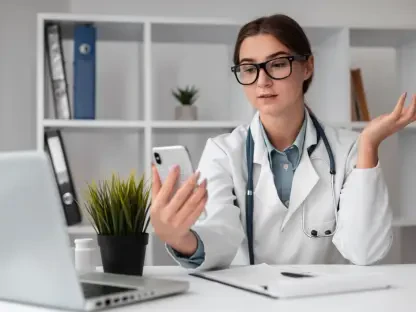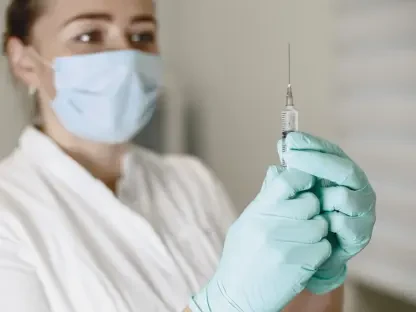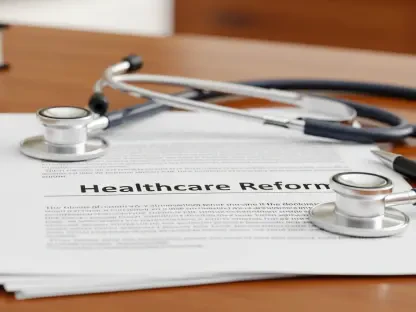In recent years, the intersection of technology and healthcare has brought significant advancements, shaping the future of medical practices and patient care. This article examines key areas where technology is driving transformation and enhancing patient safety.
Addressing Reporting Delays in Medical Device Incidents
The Study on Reporting Delays
A new study published in the BMJ has shed light on a critical issue in the healthcare industry: delayed reporting by medical device manufacturers to the FDA. The study revealed that there are substantial delays and missing data in the reporting of adverse events, which could have serious implications for patient safety. Researchers analyzed 4.4 million reports submitted to the FDA between 2019 and 2022 and found that nearly 14% of these reports, or roughly 600,000, were submitted late. Additionally, over 600,000 incidents were reported with missing or invalid dates, leading to concerns over the reliability and accuracy of the data. Notably, the study found that 1,004 deaths were reported after the required 30-day deadline, raising alarms about the timeliness and effectiveness of current reporting systems.
The authors of the study suggest that these delays may result from manufacturers withholding critical safety information or taking additional time to verify the details contained in the reports. Regardless of the reason, the trends identified highlight ongoing issues in device surveillance and underscore the importance of prompt and accurate reporting. Given that many medical devices in the U.S. market are approved with limited clinical data, timely dissemination of adverse event information is crucial for ensuring patient safety. These findings call for heightened scrutiny and potential regulatory changes to ensure that manufacturers comply with reporting requirements and that the FDA can act swiftly to address any emerging safety concerns.
Impact on Device Surveillance
These reporting issues highlight the need for more rigorous oversight and transparent reporting practices within the medical device industry. The integrity of device surveillance is crucial, especially considering the limited clinical data available for many devices currently approved for use in the U.S. market. Timely and accurate reporting of adverse events is essential to identify potential risks and implement necessary measures to safeguard patient safety. The delays and data discrepancies uncovered by the study underscore the challenges faced by regulatory bodies in maintaining effective device surveillance and ensuring that manufacturers adhere to reporting requirements.
To address these challenges, there must be increased emphasis on enforcing reporting deadlines and improving the quality of data submitted to regulatory agencies. Implementing stricter penalties for non-compliance and enhancing the capabilities of the FDA’s monitoring systems could help mitigate the risk of delayed or inaccurate reporting. Additionally, fostering a culture of transparency within the medical device industry is vital to ensure that critical safety information is promptly shared with the public and healthcare providers. By addressing these issues, the healthcare sector can enhance device surveillance and ultimately improve patient safety.
Legislative Scrutiny on Telehealth Practices
Financial Relationships Under Investigation
Telehealth platforms have recently come under legislative scrutiny due to their financial relationships with pharmaceutical companies like Eli Lilly and Pfizer. Senators, including Dick Durbin, sent letters to five telehealth companies—UpScript Health, Form Health, 9amHealth, Thirty Madison’s Cove, and Populus Health—seeking detailed information about prescription volumes and potential provider incentives. These inquiries are part of an effort to determine whether contracts between telehealth companies and pharmaceutical firms violate the federal anti-kickback statute. This scrutiny aims to protect the integrity of healthcare practices and ensure that patient care is not compromised by financial incentives.
Despite previous reassurances from Pfizer and Eli Lilly that providers are not being incentivized to prescribe specific drugs, the legislative examination reflects broader concerns about potential conflicts of interest in the telehealth sector. The increasing prevalence of telehealth services, particularly during the COVID-19 pandemic, has amplified the need for regulatory oversight to ensure ethical practices. As telehealth continues to evolve and expand, it is essential to maintain transparency and integrity in provider-patient interactions. The findings of these legislative investigations could lead to regulatory changes that strengthen the ethical standards of telehealth platforms and protect patient interests.
Ensuring Ethical Telehealth Practices
This legislative scrutiny of telehealth platforms highlights the need for greater oversight to prevent potential conflicts of interest that could impact patient care. Ensuring ethical telehealth practices is crucial as the industry continues to grow and integrate into mainstream healthcare. By examining the financial relationships between telehealth companies and pharmaceutical firms, legislators aim to safeguard the integrity of telehealth services and promote transparency. This scrutiny is a proactive step towards mitigating any undue influence that financial incentives may have on prescription practices, ultimately prioritizing patient well-being.
In response to these investigations, telehealth companies may need to adopt more stringent measures to ensure compliance with federal regulations and uphold ethical standards. This could include implementing internal audits, enhancing disclosure practices, and fostering a culture of accountability within the organization. Additionally, regulatory agencies may introduce new guidelines to address potential conflicts of interest and provide clearer protocols for telehealth providers. By addressing these concerns, the healthcare industry can ensure that telehealth platforms operate transparently and ethically, providing patients with reliable and unbiased care.
Innovations in Virtual Healthcare
Hinge Health’s Market Expansion
Hinge Health, a company known for its innovative virtual musculoskeletal care solutions, recently announced plans for an initial public offering (IPO) and is exploring new market opportunities. Hinge Health primarily serves self-insured employers, but the company is now looking to expand its services to Medicare Advantage and, eventually, to Medicare and Medicaid. This expansion underscores the company’s commitment to making its advanced care solutions accessible to a broader patient population. Hinge Health’s filing highlights the substantial market opportunity within these areas and indicates early-stage efforts to introduce specialized programs for pelvic health and fall prevention into the Medicare Advantage market.
One of the key strategies that Hinge Health is leveraging as part of its market expansion is the adoption of automation and artificial intelligence (AI) to enhance service delivery and efficiency. By using computer vision systems and AI to support care teams, Hinge Health aims to significantly reduce the hours required by human care teams, thereby improving operational efficiency and scalability. This approach mirrors similar efforts by competitors like Sword Health, who also emphasize the role of technology in streamlining healthcare delivery. By integrating advanced technologies into their care models, companies like Hinge Health are setting new standards for virtual healthcare services, making high-quality care more accessible and cost-effective.
Advancing Remote Patient Monitoring
The trend of remote patient monitoring is gaining traction, with new subscription services like Rune Labs’ Parkinson’s disease monitoring leveraging wearable technology to enhance care. Rune Labs’ service utilizes the Apple Watch to track and monitor patients, providing human coaching and monitoring for fall risk and complications at a cost of $600 per year. This subscription-based model offers a personalized approach to patient care, making advanced monitoring accessible to more patients who are willing to invest in such services. Rune Labs’ collaboration with partners like Kaiser illustrates the effectiveness of these solutions in real-world settings, demonstrating the potential for widespread adoption.
In addition to Rune Labs, other companies are also introducing innovative remote monitoring solutions. MedRhythms, for instance, has developed a gait rehabilitation system called Movive, designed to assist Parkinson’s disease patients. Movive uses sensors and music to guide therapy, leveraging the FDA’s 510(k) exempt status for biofeedback devices. This classification allows MedRhythms to pursue reimbursement as durable medical equipment, similar to the path it successfully navigated with its stroke rehabilitation system, InTandem. These advancements in remote patient monitoring highlight the growing trend of utilizing technology to provide personalized and accessible care options, ultimately improving patient outcomes and quality of life.
Legal Battles Over Technology Innovation
AliveCor vs. Apple
The ongoing legal dispute between AliveCor and Apple highlights the competitive and litigious nature of technological innovation within the healthcare sector. AliveCor alleged that Apple copied its heart-monitoring technology used in the Apple Watch, leading to a legal confrontation between the two companies. The International Trade Commission initially sided with AliveCor, imposing an import ban on certain Apple Watches. However, Apple managed to invalidate AliveCor’s patents through a U.S. patent office tribunal, which resulted in the suspension of the import ban. A federal appeals court recently upheld the ruling that invalidated AliveCor’s patents, further narrowing AliveCor’s legal options.
The legal battle between AliveCor and Apple underscores the complexities and challenges associated with protecting intellectual property in the healthcare industry. As companies invest heavily in developing new technologies, securing robust patent protection is essential to safeguard their innovations. This case highlights the importance of having comprehensive intellectual property strategies to navigate the legal landscape successfully. For AliveCor, the setback in patent protection presents significant hurdles in its efforts to compete with major players like Apple. The outcome of this dispute could have broader implications for other companies seeking to protect and commercialize their technological advancements.
Implications for Patent Protection
The patent dispute between AliveCor and Apple serves as a case study in the complexities of patent protection in the healthcare industry. The invalidation of AliveCor’s patents not only affects the company’s competitive standing but also highlights the broader challenges that innovators face in protecting their intellectual property. This case emphasizes the need for robust patent strategies that can withstand legal scrutiny and protect valuable technological advancements. As healthcare technology continues to evolve, companies must be proactive in securing and defending their patents to maintain a competitive edge and protect their investments.
For companies in the healthcare sector, the outcome of the AliveCor vs. Apple case underscores the importance of having a thorough understanding of patent law and the potential risks associated with patent disputes. Developing comprehensive intellectual property strategies, including regular patent reviews and contingency plans, can help mitigate the impact of legal challenges. Additionally, fostering a collaborative approach with regulatory bodies and industry peers can promote a more transparent and supportive environment for innovation. By addressing these challenges, the healthcare industry can continue to advance technological solutions that improve patient care while protecting the interests of innovators.
Perspectives from Industry Leaders
Operational Challenges at SAMHSA
A report by STAT sheds light on the operational challenges faced by employees at the Substance Abuse and Mental Health Services Administration (SAMHSA). The report describes the agency as being in turmoil, highlighting issues such as understaffing, bureaucratic inefficiencies, and inadequate support for front-line workers. These challenges have significant implications for the agency’s ability to effectively address substance abuse and mental health issues, which are critical public health concerns. The operational difficulties at SAMHSA illustrate the broader systemic issues within healthcare agencies that can hinder their ability to deliver essential services.
Addressing these operational challenges requires a multifaceted approach, including increasing funding and resources, streamlining bureaucratic processes, and providing better support for employees. Enhancing workforce morale and addressing systemic inefficiencies are crucial steps toward improving the agency’s overall performance. By tackling these issues, SAMHSA can better fulfill its mission of providing effective substance abuse and mental health services to those in need. Furthermore, addressing operational challenges within healthcare agencies is essential for ensuring the efficient and effective delivery of public health services, ultimately contributing to the well-being of the broader population.
Insights from Epic’s CEO
In recent years, the convergence of technology and healthcare has led to remarkable advancements, shaping the future of medical practices and patient care. This article delves into key areas where technological innovation is driving transformation and enhancing patient safety. From telemedicine to the integration of artificial intelligence, these innovations are revolutionizing the way healthcare is delivered. Wearable devices and health apps are empowering patients to take control of their own health by providing real-time data and insights. Electronic health records (EHRs) are streamlining the flow of information among healthcare providers, improving efficiency and reducing errors. Robotic surgery and precision medicine are further examples of how technology is improving patient outcomes and safety. As technology continues to evolve, its impact on healthcare will undoubtedly grow, offering new opportunities to improve patient care and transform medical practices.









